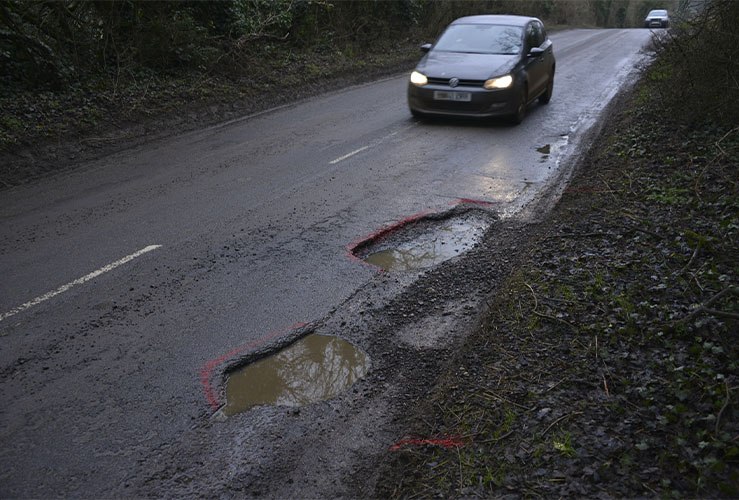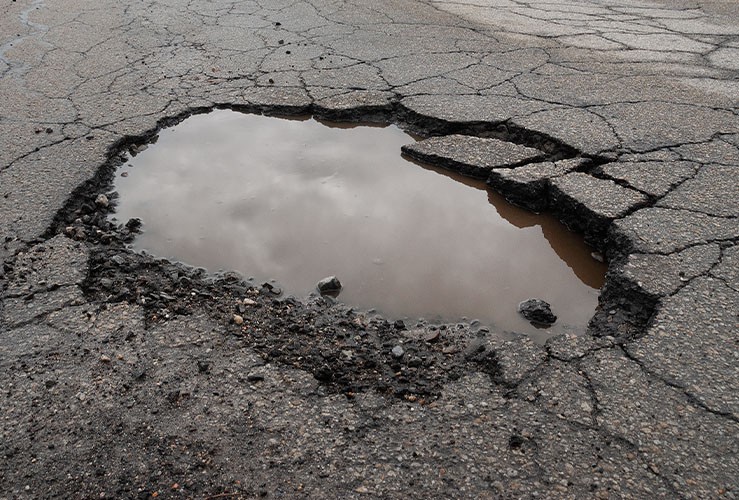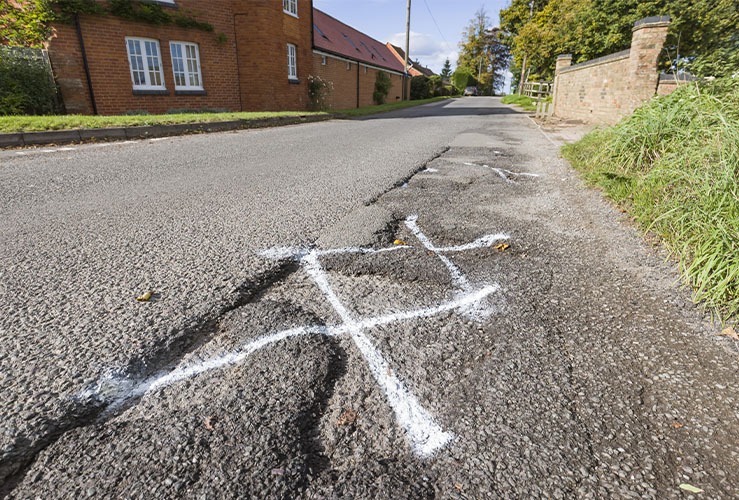Potholes are the scourge of Britain's roads. Local councils spend huge sums attempting to clear the backlog of pothole repairs, but some estimates suggest it will still take them around 14 years to do so.
And the government appears to understand the scale of the problem, having set aside £6Bn to fix our cracks and divided highways.
But those repairs will take time to filter through, and in the meantime we all face the risk of hitting a bump in the road and being landed with a big repair bill.

Claiming for your repair costs
However, you may be able to make a claim with your local authority and get your money back, but only if you can prove they were at fault.
Proving liability is no easy task, since potholes are a fact of motoring life. You need to show the council was aware of the pothole and did not act in a timely manner to fix it. Having done this, you'll have a good chance of getting some cash back for your repairs.
As with so many things, there are two aspects to making a claim. On the one hand you're increasing pressure on local authorities to keep potholes in check. But on the other hand, you're making a claim on taxpayers’ funds. With this in mind, you would need to decide for yourself what the right thing to do is.
Other than making a claim, one of the best things you can do is report a pothole as soon as you see it.

How do potholes occur?
Most potholes are formed when water fills small cracks in the road, freezees, then expands, which acts to widen the gap.
What classifies as a pothole?
According to many councils, a pothole has a depth of at least 40mm. Claims are still possible on shallower holes, but you have less chance of success.
Did the pothole really cause the damage?
You'll need to get a mechanic to put in writing that any damage was caused by a pothole. Commonly, pothole damage relates to tyres, wheels and axles.
If the pothole merely exacerbated a pre-existing issue, then you may only get back part of your repair costs.
Who do you tell about the pothole?
Different sections of road are maintained by different organisations. Generally speaking, in England councils look after B roads and minor A roads, while Highways England takes care of motorways and major A roads.
TfL maintains London roads, while Bear Scotland and Scotland Transerv look after Scottish roads.
How much can I claim for pothole damage?
There's no exact figure, but it's often between £300 and £500.
What if I'm injured due to the pothole?
It's also possible to claim for an injury due to a collision with a pothole, but that's outside the scope of this article.
How long will a pothole damage claim take?
It can take a while - up to eight months.
Is success likely?
It's a challenge to properly organise and submit a claim, but there's a reasonable chance you'll be successful.
Is there a time limit on claims for pothole damage?
There's a six year limit (five in Scotland) - these are small claims court limits.
What if the potholed road is privately owned?
The same principle applies - the road owner is responsible for keeping the road in good condition.
What about claiming on my car insurance for pothole related damage?
This could be a quicker and more effective way to recoup any pothole related repair costs. However, you'll need to consider any excess and the impact on your no claims bonus.
However, you cannot claim twice. Any monies from a second claim would need to be paid to the body that paid out in the first claim.
Should I tell my insurer anyway?
Insurers often say drivers should inform them of any pothole damage straight away. This gives you six months to make an insurance claim, meaning you have time to try a claim with the local authority/roads agency first.

Collecting evidence for a pothole damage claim
To support your pothole claim, try to gather the following - if it's safe.
- Take pictures of the pothole immediately (only if it is safe to do so).
- Take medium-range shots to establish the pothole's position
- Get shots that include landmarks/buildings to help authorities locate the pothole.
- Take photos of the damage to your car.
NB: you’re not legally allowed to stop on a motorway and take photos, nor indeed for any other reason (apart from being involved in a breakdown, collision or other emergency).
Other notes and information to collect:
- Note down names of nearby landmarks.
- Note down the date and time you hit the pothole, weather conditions etc.
- Make a simple sketch of the area and the pothole's location.
- If there were any witnesses, collect their contact details and ask them to write down what they saw.
- Keep bills and records related to the repairs needed on your car. This is critical since you are claiming for repair costs, not general compensation.
Fast claim
You may decide to make a 'fast claim' which as the name suggests is much quicker than a full claim.
After you've made your claim, there are three possible outcomes:
- You win and get your repair costs refunded
- You're offered part of the sum claimed
You don't have to accept this, but it's better than nothing and a full claim win is far from assured.
- Your claim is rejected
You can either give up or try a full claim.

A full claim
In essence, a full claim involves:
- Making a Freedom of Information request for the relevant body’s road repair policy and inspection history, and then finding out if the pothole in question had indeed been identified, attended to or neglected.
- Going through the information passed back and forth to determine if and when inspections had been carried out. This could take a long time and in the end may not be worth the time and hassle.
- If the road in question had a history of potholes
- Frequency of any safety patrols
- Whether inspections were on foot or in a vehicle
- Speed of any inspection van (going too fast?)
- If a pothole had been previously reported, what repairs - if any - were undertaken to address it?
Were national or local authority policies followed?
If not, you may be able to prove they were negligent in this regard.
Submit your claim for pothole damage
When submitting your claim for pothole damage, use neutral language - since it might be read out in court if it gets that far (hopefully it will be cleared up before that). In your account, make constant reference to the collected evidence.
What if your claim fails?
You then have the option of going to a small claims court, seeking a maximum of £10,000 (£5,000 in Scotland).




